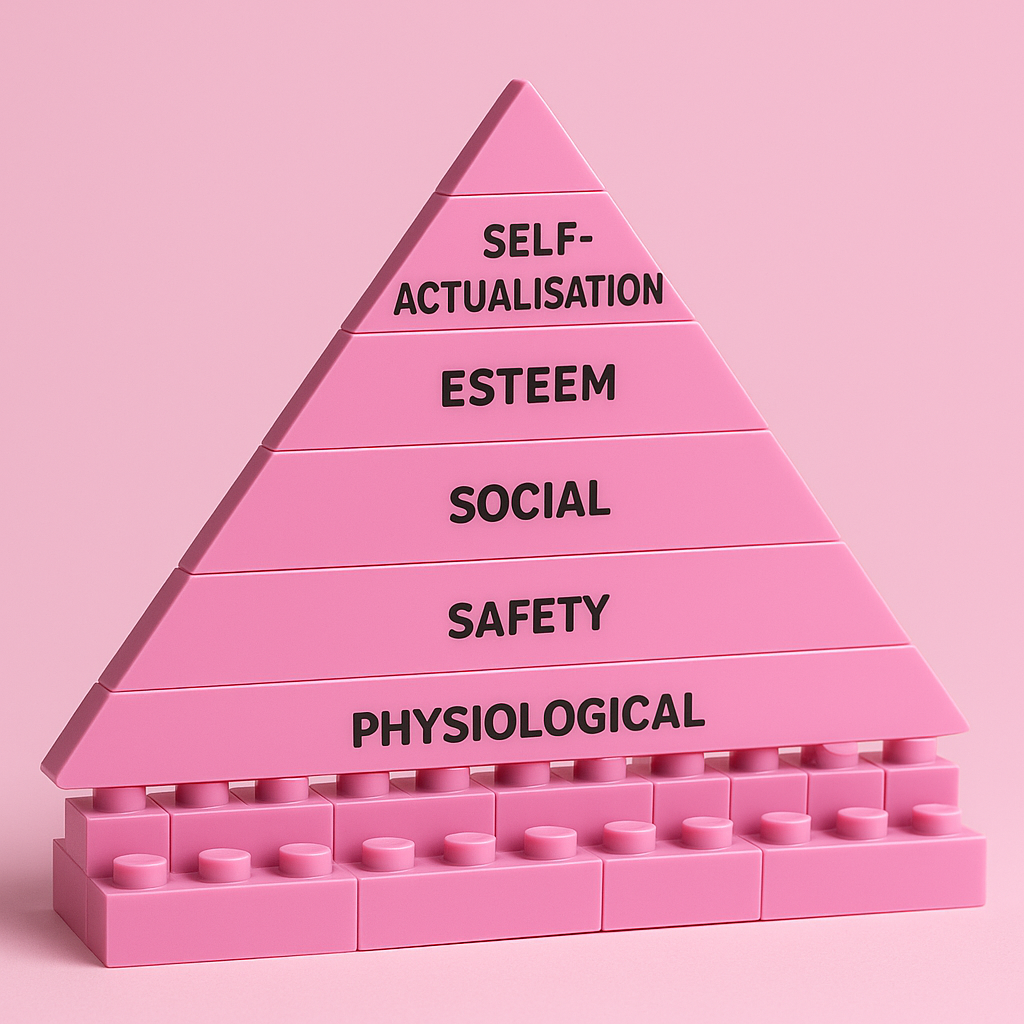Confidently wrong: Why we misquote Maslow and misunderstand AI

The pyramid that never was
You’ve probably seen Maslow’s hierarchy of needs: a five-level pyramid that starts with food and shelter and ends with self-actualization. It’s tidy. It’s visual. It’s wrong.
Maslow never drew a pyramid. He described needs as overlapping tendencies, not a strict ladder. You don’t need to finish belonging before pursuing esteem. You can feel creative even if you’re broke. And different people prioritize needs differently. Maslow himself said the hierarchy isn’t fixed.
But the pyramid stuck. Why? Because it’s simple, feels logical, and gives people a sense of understanding. Enter: The Dunning-Kruger Effect!
The confidence of the underinformed
The Dunning-Kruger effect is a well-documented cognitive bias where people with low expertise in a subject overestimate their competence, because they don’t know what they don’t know.
In the case of Maslow, people saw the diagram, heard a catchy explanation in a training once, and started citing it with total confidence. They didn’t realize how much nuance they were missing, because they weren’t aware there was any nuance to begin with.
This is exactly what’s happening with AI right now, especially in business.
AI: The new pyramid
We’re watching the same pattern unfold in real time. Executives and teams are:
- Rolling out AI strategies based on tech they don’t truly understand
- Making ethical claims with no grounding in data governance or model architecture
- Confusing predictive text generation with reasoning or thinking
- Assuming one flashy demo equals readiness for full enterprise deployment
Just like the pyramid, AI appears understandable at a glance. You talk to it; it talks back. It’s impressive. So, people assume they’ve got a handle on it. They feel confident talking about risks, investments, and capabilities, without seeing the missed complexities.
This is dangerous in business. Not because people are malicious, but because they make high-impact decisions from a place of false certainty.
Surface-level understanding leads to surface-level strategies
You wouldn’t base a company’s well-being strategy on a rigid version of Maslow’s pyramid. Yet many companies are building AI initiatives on equally flawed simplifications:
- AI will replace this whole department
- Let’s use Copilot for everything
- We just need a chatbot to automate the process
These are not strategies; they’re assumptions cosplaying as insight.
The real cost of overconfidence
In both the Maslow and AI examples, the cost of misunderstanding isn’t just academic. It leads to:
- Poor design decisions
- Wasted investment
- Frustrated employees
- Missed opportunities
- Ethical missteps
What’s missing isn’t intelligence; it’s depth. And humility. The willingness to say, I don’t fully understand this yet—let’s dig deeper.
So what can we learn?
- Be skeptical of oversimplified models
- Encourage questions, not just confidence
- Balance excitement with education: Yes, explore AI. But build internal literacy before you commit to major rollouts
- Remember that real expertise sounds cautious. The more someone knows about AI, the more they acknowledge its limits.
Final thought
Maslow didn’t give us a pyramid, and AI isn’t magic. In both cases, the danger lies not in the tool or theory, but in our overconfidence about how much we actually understand. So next time you hear someone explain AI with total certainty, pause for a second.
You might just be listening to a pyramid in the making.
Published on:
Learn more